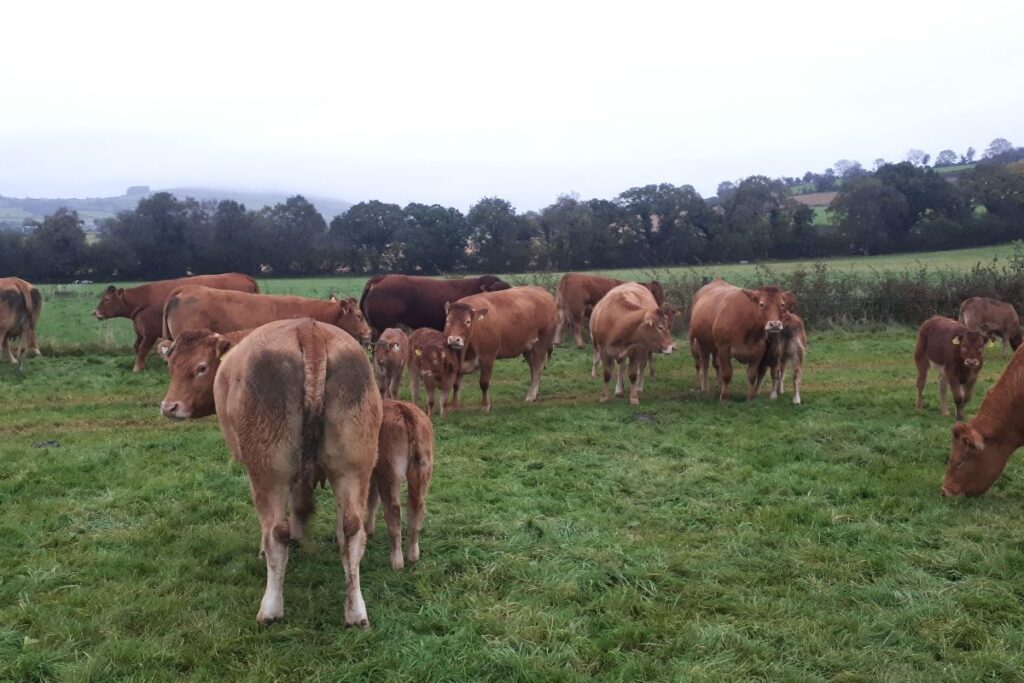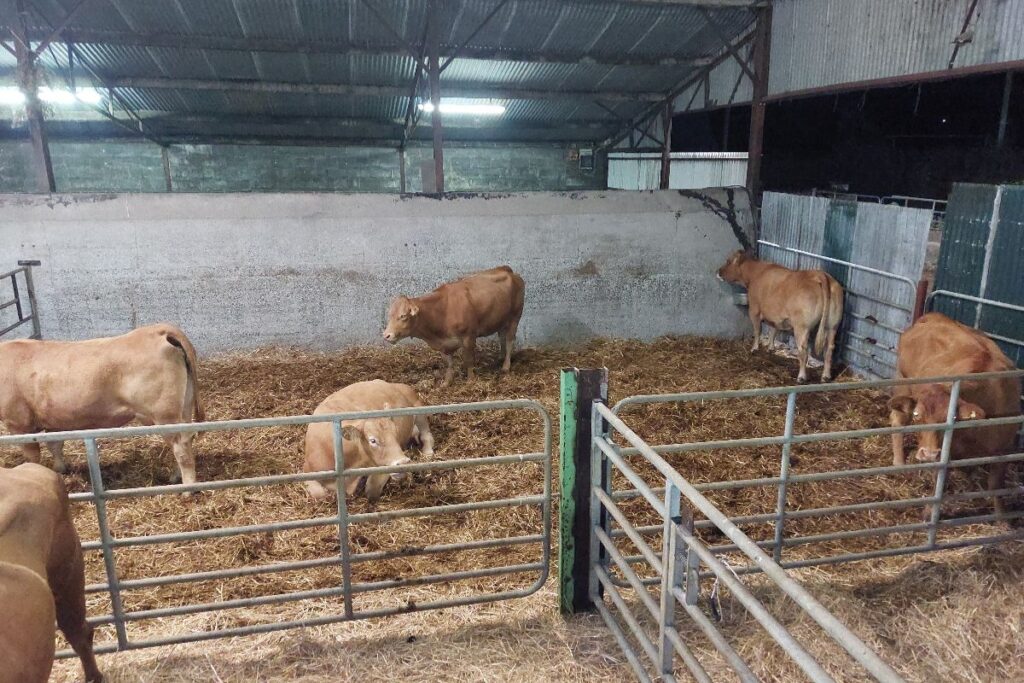That’s Farming editor, Catherina Cunnane, in conversation with Killian Griffith of Millrace Farm in this week’s Suckler Focus series. He discusses his preference for the Limousin breed, juggling suckler farming with off-farm employment with his family’s assistance and the industry’s future.
“I run Millrace Farm in Rosdillig, Borris, County Carlow, with my wife, Karen, four sons: Jack, Harry, Charlie and Daniel and my father, Peadar.
There has been Griffiths here since the mid-1700s, so farming goes back many generations here.
When I was growing up, we had drystock and tillage, but we got into sucklers gradually in the early 1990s.
When I was growing up, we always had some tillage as part of a rotation, but we did not do it after 2000 until we started back doing a bit in 2021 mainly to freshen ground and reseed.
Farming is a part-time affair, as I work full-time as an area sales manager for Kuhn Center Ireland.

Millrace Farm
We usually run around 35 cows, all of which are commercials, but we bought our first pedigree Limousin breeding female last year and have subsequently become members of the Irish Limousin Cattle Society.
Numbers have always remained steady at around 35 cows – that is a golden number for our 80ac enterprise.
We run all Limousin-crosses here at the moment, but might look at expanding the pedigree side of the farm in the future. We find the Limousin easy to manage, very consistent breeders and there is a good market for them.
I like a good U type red Limousin cow as they throw a very consistent calf which is very saleable. Our cows usually run around the 600 to 700 kg weight range.
We have a stockbull and AI some heifers, if possible. Previously, we undertook two years of fixed-time AI, but have found this to be time-consuming when juggling full-time off-farm employment.
We calve in June and July every year because it suits best as work quietens down a little around this time. Plus, cows calve outside, and calves are good and hardy going into the shed.

Selling weanlings live
We aim to sell all calves as weanlings at around 10 to 12 months of age. The bulls usually go for shipping at around 400 to 450kg and we hope to get anywhere over €3.00/kg, but that depends on the trade.
Meanwhile, heifers are either sold in the mart or to repeat customers from the yard. We do not keep our own replacements; fewer groups of stock are easier managed, especially when working full-time.
If a cow is not in-calf after 8 weeks of breeding, it is culled or if it is not producing a proper calf – there is no place for passengers around here.
We are close to achieving one calf per cow per year, but sometimes things go wrong for you, so that varies year on year. The biggest thing is the compact calving of eight weeks.
I buy in replacements as required every year and usually, they are 24 months plus at calving.

Suckler-bred stock – my thoughts
In my opinion, in this country, suckler-bred stock are undervalued through their weight gain and meat yield and should not be lumped in with less efficient dairy-bred stock.
Farmers should be rewarded properly for producing a very high-class product. There are no shortcuts to doing it right and the financial return does not reflect this.
Grassland management is important here, but we do not measure grass. Our system revolves around fields being paddocked off into 2-acre plots which usually works out at a 21-day rotation, depending on demand.
I suppose knowing what end/market you want to target and having the right gear to do this are essential components of successful suckling. Breeding quality is the only way you have of making anything at this.

Future
My plans for the future are to focus on developing the herd and the quality and improving infrastructure around the farm.
There is always room for improvement of quality, but calving ease is important here too, so it is a fine balance.
Herd size will more than likely stay the same and maybe some more pedigrees, so we will see how that develops.
All in all, I am always looking to improve conception rates during breeding season and grass quality and develop the tillage side.

Reflection
My journey to date has been tough at times, especially through the years with bad prices.
However, there is a nice sense of achievement when you have a batch of quality weanlings ready to go or when there is a nice crop of barley ready to be cut.”
To share your story, email – [email protected]





